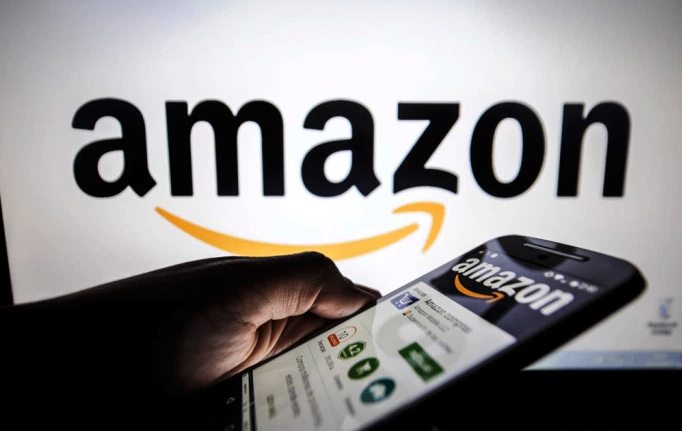

Every seller, new or old wants to sell on Amazon because of its huge, global customer base. The Retail Giant that Changed the eCommerce LandscapeĪmazon is the leading e-retailer in the United States, with net sales amounting to close to 386 billion U.S.
 Other Pricing Strategies for Success on Amazon. What is Intelligence Node’s Take on Dynamic Pricing for Amazon?. Establishing Prices for Your Products on Amazon. Amazon’s PS ratio is 3.8, not exactly a bargain value but relatively in-line with the market as a whole. The S&P 500’s PS ratio is currently 3.1, nearly twice its long-term average of 1.62. Price-to-sales ratio is another important valuation metric, particularly for unprofitable companies and growth stocks. The S&P 500’s overall PEG is currently about 1 Amazon’s PEG is 1.65, a relatively attractive valuation for a megacap tech stock. The price-to-earnings-to-growth ratio (PEG) is a good way to incorporate growth rates into the evaluation process. Growth rate is also critical for companies that are rapidly building their bottom lines. However, when it comes to evaluating a stock, earnings aren't everything. It’s even roughly 150% higher than its consumer cyclical sector peers that are averaging a 20.2 forward earnings multiple. Unfortunately, Amazon’s forward earnings multiple of 50.4 is about 150% higher than the S&P 500 as a whole and makes Amazon stock look relatively overvalued. Growth: Looking ahead to the next four quarters, the S&P 500’s forward PE ratio looks much more reasonable at just 20.7. Related Link: Is Google's Stock Overvalued Or Undervalued? However, Amazon’s PE is actually down 23.7% over the past five years, suggesting its earnings multiple is on the low end of its historical range. That number is well above the S&P 500 average as a whole. For comparison, the S&P 500’s PE is currently at about 34.6, more than double its long-term average of 15.9.Īmazon’s PE is currently 58.9. But with a $1.72 trillion market cap, some investors are wondering if there’s any value left in Amazon stock.Įarnings: A price-to-earnings ratio (PE) is one of the most basic fundamental metrics for gauging a stock’s value. (NASDAQ: AMZN) shares have lagged the S&P 500 in 2021, generating a year-to-date total return of 4.7%.Īmazon is still putting up impressive growth numbers.
Other Pricing Strategies for Success on Amazon. What is Intelligence Node’s Take on Dynamic Pricing for Amazon?. Establishing Prices for Your Products on Amazon. Amazon’s PS ratio is 3.8, not exactly a bargain value but relatively in-line with the market as a whole. The S&P 500’s PS ratio is currently 3.1, nearly twice its long-term average of 1.62. Price-to-sales ratio is another important valuation metric, particularly for unprofitable companies and growth stocks. The S&P 500’s overall PEG is currently about 1 Amazon’s PEG is 1.65, a relatively attractive valuation for a megacap tech stock. The price-to-earnings-to-growth ratio (PEG) is a good way to incorporate growth rates into the evaluation process. Growth rate is also critical for companies that are rapidly building their bottom lines. However, when it comes to evaluating a stock, earnings aren't everything. It’s even roughly 150% higher than its consumer cyclical sector peers that are averaging a 20.2 forward earnings multiple. Unfortunately, Amazon’s forward earnings multiple of 50.4 is about 150% higher than the S&P 500 as a whole and makes Amazon stock look relatively overvalued. Growth: Looking ahead to the next four quarters, the S&P 500’s forward PE ratio looks much more reasonable at just 20.7. Related Link: Is Google's Stock Overvalued Or Undervalued? However, Amazon’s PE is actually down 23.7% over the past five years, suggesting its earnings multiple is on the low end of its historical range. That number is well above the S&P 500 average as a whole. For comparison, the S&P 500’s PE is currently at about 34.6, more than double its long-term average of 15.9.Īmazon’s PE is currently 58.9. But with a $1.72 trillion market cap, some investors are wondering if there’s any value left in Amazon stock.Įarnings: A price-to-earnings ratio (PE) is one of the most basic fundamental metrics for gauging a stock’s value. (NASDAQ: AMZN) shares have lagged the S&P 500 in 2021, generating a year-to-date total return of 4.7%.Īmazon is still putting up impressive growth numbers.






 0 kommentar(er)
0 kommentar(er)
